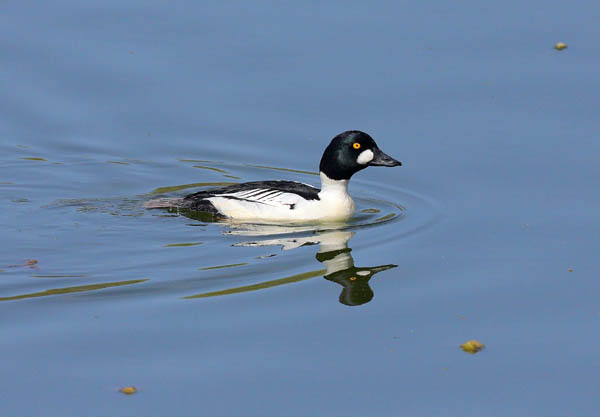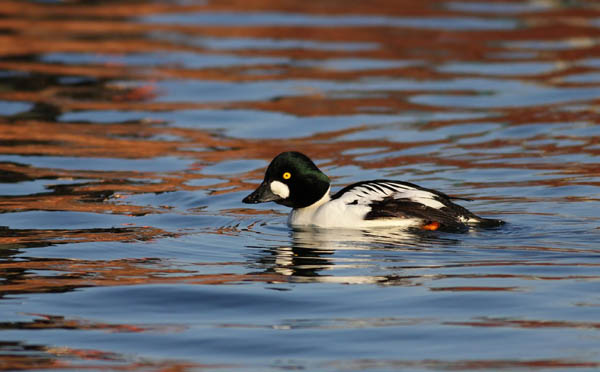Bucephala clangula
IUCN
LCBasic Information
Scientific classification
- name:Bucephala clangula
- Scientific Name:Golden-eyed duck, Magpie duck, White-faced duck,Bucephala clangula,Common Goldeneye
- Outline:Waterfowl
- Family:Anseriformes Anatidae Dactylorhinus
Vital signs
- length:32-69cm
- Weight:0.5-1kg
- lifetime:6-14years
Feature
It has a short and thick beak, a short neck and a pointed tail. These features are very obvious and easy to identify.
Distribution and Habitat
In China, it breeds in the far northeast, passes through central and eastern China during migration, and winters in the Yellow River, Yangtze River and Pearl River basins including the southwest, as well as coastal waters from northeast to southeast, and strays to Taiwan Island. Abroad, it breeds in the central and northern parts of the Holarctic and winters in the southern part of the Holarctic.
During the breeding season, it mainly inhabits streams, ponds and canals in plain forest areas, especially forest streams and ponds near lakes and slow-flowing rivers; during the non-breeding season, it mainly inhabits slow-flowing rivers, lakes, reservoirs, estuaries, bays and coastal waters.
Appearance
A medium-sized diving duck with a round and pointed head and golden eyes. The male has a dark green head, a large oval white spot at the base of the beak, a black upper back, large white spots on the wings, and white lower neck, chest and underparts. The female has a dark brown head, gray-brown upper back, chest and flanks, and a white lower neck forming a neck ring. The iris is golden yellow, the male's beak is black, the female's is dark brown with a yellow tip, and the feet are orange-red.
Details
The magpie duck is a common wild duck in the eastern coastal areas and inland lakes and swamps of China. It is abundant in number. Since 1986, it has been found that it is common in the Songhua River and Yalu River in Jilin Province, the coast of Liaodong Peninsula in Liaoning Province and the lower reaches of the Yalu River during winter and migration. However, the population is not large, and a group of 20-30 is common.

The magpie duck begins to migrate from the southern wintering grounds to the northern breeding grounds in early March in spring. A few continue to migrate until early April, and some young birds that do not participate in breeding stay in the wintering grounds further north. In autumn, it migrates south from the breeding grounds from early October to November. They often migrate in small groups along rivers or coasts. They usually do not fly high, but fly close to the water surface.

Except during the breeding season, they often move in groups, usually more than 10-20, and also see large groups of up to 40-50. They are alert and timid, and people cannot get close to them. They often fly away or swim away when they see people from a distance. They swim with their tails up. They swim in groups in slow-flowing rivers and coastal seas during the day, and constantly dive for food while swimming. They are good at diving and can swim underwater for about 30 seconds at a time. The flight is fast and powerful, but when taking off, the two wings need to flap and run continuously on the water surface to fly out of the water.
The magpie duck forages by diving. The food mainly consists of insects and their larvae, worms, crustaceans, mollusks, small fish, frogs, tadpoles and other freshwater and saltwater aquatic animals that can be used.








